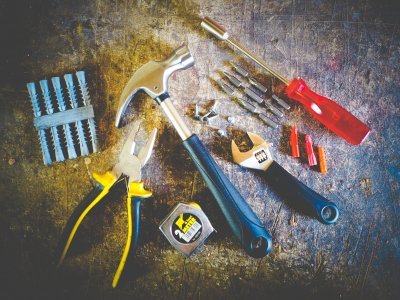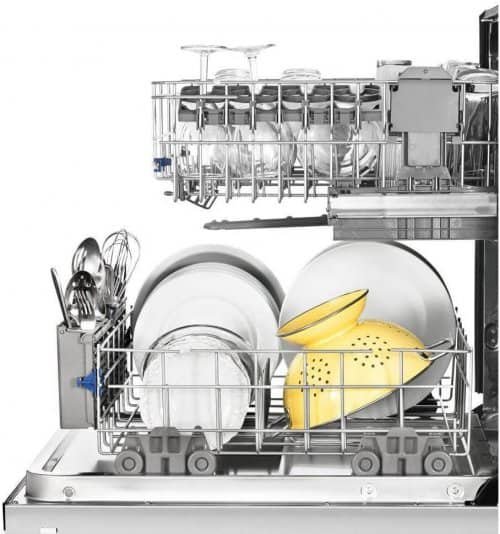Welcome to this comprehensive guide on unclogging a dishwasher with standing water. A clogged dishwasher can be frustrating, but with the right steps, you can quickly resolve the issue and get your dishwasher back to its optimal functioning. In this article, we will walk you through each step, providing easy-to-follow instructions and tips to help you successfully unclog your dishwasher.
Table of Contents
Understanding the problem: Why is the dishwasher clogged?
A clogged dishwasher can be caused by various factors, such as food particles, grease, and debris that accumulate over time. These substances can block the drain, preventing water from flowing out of the dishwasher effectively. Additionally, issues with the drain filter, drain hose, or garbage disposal can also contribute to the clogging problem.
Safety precautions before unclogging the dishwasher:
Before you begin, it’s crucial to prioritize safety. Always ensure that the power supply to the dishwasher is turned off. You can either unplug it or switch off the circuit breaker that controls the dishwasher’s electricity. Moreover, protect your hands by wearing rubber gloves to prevent any injuries or contact with dirty water.
Tools and materials needed:
To effectively unclog your dishwasher, gather the following tools and materials:
- Bucket
- Towels or rags
- Screwdriver
- Pliers
- Plunger
- Plumbing snake

Step 1: Turning off the power and water supply:
To ensure safety, turn off the power supply to the dishwasher by either unplugging it or switching off the circuit breaker. Additionally, you’ll need to shut off the water supply to the dishwasher by closing the water valve.
Step 2: Removing the standing water:
Using a bucket or towels, carefully remove the standing water from the dishwasher. Be cautious not to spill any water on the floor, as it can cause slips and falls.
Step 3: Inspecting the drain filter:
Locate the drain filter, typically located at the bottom of the dishwasher. Remove the filter by unscrewing or unlatching it, depending on your dishwasher model. Check for any debris or food particles that may be clogging the filter. Clean it thoroughly and rinse it under running water before reattaching it.
Step 4: Cleaning the drain hose:
Inspect the drain hose, which connects the dishwasher to the sink’s plumbing system. Remove the hose and check for any clogs or obstructions. If you find any debris, use a combination of water and a mild detergent to clean the hose thoroughly. Once cleaned, reattach the hose securely.
Step 5: Checking the garbage disposal:
If your dishwasher is connected to a garbage disposal, inspect the disposal unit for any clogs. Run water through the disposal to ensure it’s functioning correctly. Clear any clogs or obstructions in the disposal to ensure proper drainage from the dishwasher.
Step 6: Using a plunger to clear the clog:
If the clog persists, try using a plunger. Place the plunger over the dishwasher drain and plunge vigorously for a few minutes. This action can help dislodge the clog and restore proper water flow. Repeat this process a few times if necessary.
Step 7: Utilizing a plumbing snake:
If the plunger doesn’t resolve the clog, a plumbing snake can be a useful tool. Insert the snake into the dishwasher drain, rotating it gently as you push it through. Keep moving the snake back and forth to break up the clog. Once you feel the snake moving freely, remove it and flush the drain with hot water.
Step 8: Testing the dishwasher:
With the clog removed, it’s time to test the dishwasher. Turn on the power and water supply, and run a short cycle to ensure that the water drains properly. Monitor the dishwasher throughout the cycle to confirm that there are no further clogging issues.

Tips to prevent future clogs:
To prevent future clogs in your dishwasher, follow these tips:
- Scrape off excess food from dishes before loading them into the dishwasher.
- Run the garbage disposal before starting the dishwasher to prevent food debris from clogging the drain.
- Regularly clean the drain filter and remove any accumulated debris.
- Use a dishwasher cleaner periodically to remove residue and maintain optimal performance.
Can I unclog a dishwasher without professional help?
Yes, you can unclog a dishwasher by following the steps mentioned in this article. However, if the problem persists or seems complicated, it’s advisable to seek professional assistance.
How often should I clean the dishwasher drain filter?
It’s recommended to clean the dishwasher drain filter once a month to prevent clogs and maintain optimal performance.
What if the dishwasher still doesn’t drain after following the steps?
If the dishwasher continues to have drainage issues, there may be a more severe problem that requires professional attention. Contact a qualified technician to diagnose and repair the issue.
Can I use chemical drain cleaners to unclog a dishwasher?
It’s not recommended to use chemical drain cleaners in a dishwasher as they can damage the dishwasher’s components. Stick to the methods mentioned in this article for safe and effective unclogging.
How can I prevent foul odors in my dishwasher?
To prevent foul odors, regularly clean the dishwasher, including the filter and interior, and ensure proper ventilation. Additionally, using dishwasher cleaner tablets periodically can help eliminate odors and maintain freshness.
Conclusion:
Unclogging a dishwasher with standing water doesn’t have to be a daunting task. By following the steps outlined in this guide, you can successfully resolve the issue and restore your dishwasher’s functionality. Remember to prioritize safety, gather the necessary tools, and take the appropriate precautions. With a little effort, you’ll have your dishwasher running smoothly in no time.

